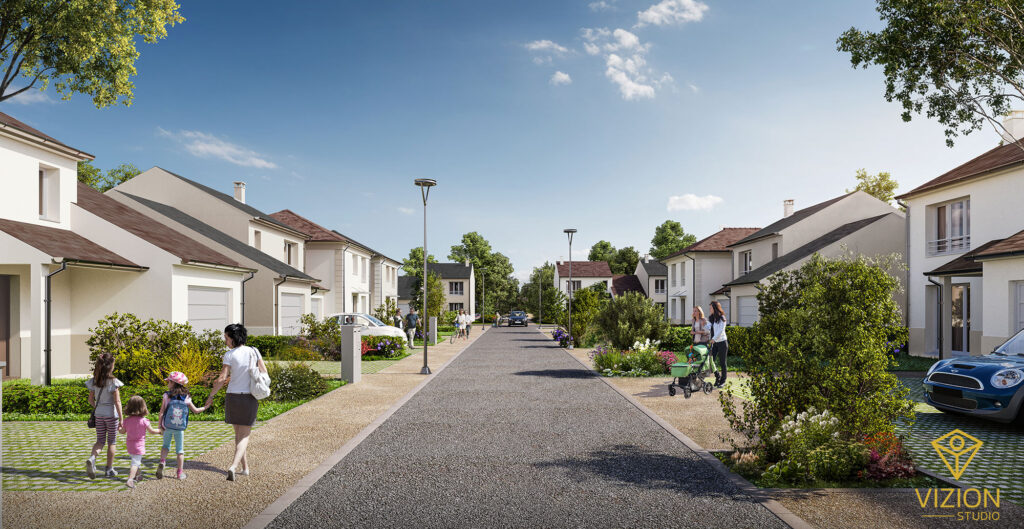In recent years, artificial intelligence (AI) has become an indispensable tool in 3D modeling. Thanks to its sophisticated algorithms and advanced operation, it offers invaluable assistance in optimizing the process of creating attractive visuals. From its early beginnings, it is gradually becoming an integral part of the various sectors involved in 3D modeling. Find out more about the role of AI in 3D modeling in this article.
Artificial intelligence for workflow automation
Artificial intelligence offers the possibility of automating certain tasks in the 3D modeling process. Among other things, it carries out modifications and adds details, making it particularly efficient for performing repetitive actions in the creation of any model.
While these tasks have traditionally been carried out by tools that often require manual input, they are now carried out all at once, thanks to AI. AI can manage and interpret project data : details to be added, any constraints, parameters and predefined objectives. It then carries out the queries provided and proceeds with the necessary steps.
AI functionality of this kind is particularly beneficial in real estate. It improves workflow by dramatically reducing errors, thus optimizing the real estate design process. Architects can use artificial intelligence to automate the creation of 3D building models. Depending on criteria such as plot size, aesthetic requirements, materials to be used and construction constraints, AI can automatically generate detailed 3D plans. The results are not yet perfect, but this represents a considerable time-saver.
Similarly, in the video game industry, developers use artificial intelligence to create detailed environments according to the requirements of the game. It can automatically generate levels, maps, landscapes, textures and other important elements. Rather than designing every detail manually, experts can use AI algorithms to create virtual worlds randomly or semi-randomly.

AI and risk reduction in 3D modeling
Artificial intelligence contributes to the creation of 3D models by anticipating the risk of errors and minimizing the associated costs. It can accurately predict the details to be added and any project constraints. This makes it possible to visualize the final result, which considerably reduces additional costs. It's worth noting that AI can provide estimates of costs, feasibility and project completion times right from the initial design stage.
By minimizing the risks associated with 3D modeling, AI is of great use in mechanical engineering. It can be used to implement simulation and predictive analysis systems. These can evaluate the performance of 3D models even before they are physically built. This approach not only reduces the costs associated with physical prototyping and field testing, but also provides an in-depth understanding of the performance and behavior of proposed designs.
When building a car, AI can simulate the vehicle's behavior under different driving conditions. It detects potential performance or safety problems. This approach enables engineers to optimize models before the manufacturing process, reducing costs and design times.
Artificial intelligence is also an invaluable aid to building design. AI can detect potential errors. It can find inconsistencies in the layout of spaces and structural problems before construction has even begun. This means it can act quickly to correct problems and find reliable solutions.
In addition, AI can estimate construction costs, assess project feasibility and estimate the time required for completion. It provides the necessary details and useful information for decision-making throughout a real estate construction project. Of course, the results of these estimates are not always perfect, due to varying data and unforeseen factors.
Integrating AI into 3D model creation thus offers undeniable advantages in terms of error reduction, cost optimization and efficient project management.
AI, model customization and adaptation
AI algorithms can be used to customize and adapt 3D models to specific customer requirements. They exploit available data to generate new creations corresponding to the desired requirements, and to offer further customization.
It's important to note that artificial intelligence can generate two types of model: implicit and explicit. Implicit creations are often represented as 2D images or 3D pixels. These can then be converted into a 3D model using reconstruction or modeling techniques based on data from different sources (images, scans or other). Sophisticated tools such as convolutional neural networks (CNNs) are commonly used to generate implicit models from images. Their use offers a precise and efficient transformation of visual data into customized 3D models.
Explicit models generate 3D shapes directly. These models are often produced by shape generation algorithms based on machine learning techniques or other AI methods. Adversarial generators (GANs) are used in particular to create realistic explicit models. They improve the quality and realism of the models produced.
The integration of AI into the 3D model creation process enables advanced customization and a diversity of generation methods to meet every need. This revolutionary approach enables us to offer customized solutions tailored to the requirements of each project.

AI, for enhanced 3D rendering
Artificial intelligence is a major asset in visual creation. Its algorithms can produce 3D renderings of remarkable precision and aesthetic appeal. They analyze the data provided and use predictive models to create convincingly realistic images.
For example, in the real estate sector, AI is used to enrich the visuals of a building complex. Depending on the information provided, it can add realistic details such as material textures, shadows, reflections and equipment. Algorithms can also adjust lighting parameters: simulate shadow effects, illuminate a room with light. They make architectural plans more convincing and aesthetically pleasing.
Such developments are beneficial in other fields such as video games, where attractive visuals are essential for player immersion. AI brings the improvements needed to ensure that the interface and every aspect of games meet the needs of the target audience. It revolutionizes the gamer experience by creating realistic renderings with impressive levels of detail, rich textures and striking visual effects.
Since artificial intelligence brings significant improvements to all 3D models, it reduces the need for hardware resources. This can save time and money.
AI plays an important role in the 3D modeling process in almost every field, including real estate. Its use and results are not yet perfect, but it is already revolutionizing the way the whole 3D modeling industry works.
However, artificial intelligence is inseparable from the expertise of the graphic designer. It offers advanced functionalities for the creation of 3D models, and is first and foremost a complementary tool. AI enriches and supports the skills and creativity of the graphic designer, rather than replacing them. In this creative partnership, the graphic artist remains the creative master, guiding and instructing the AI to express his or her artistic vision in the best possible way. As a result, this symbiotic collaboration between artificial intelligence and human expertise delivers innovative, creative and high-quality results in 3D model design.
Get high-quality 3D renderings for real estate








